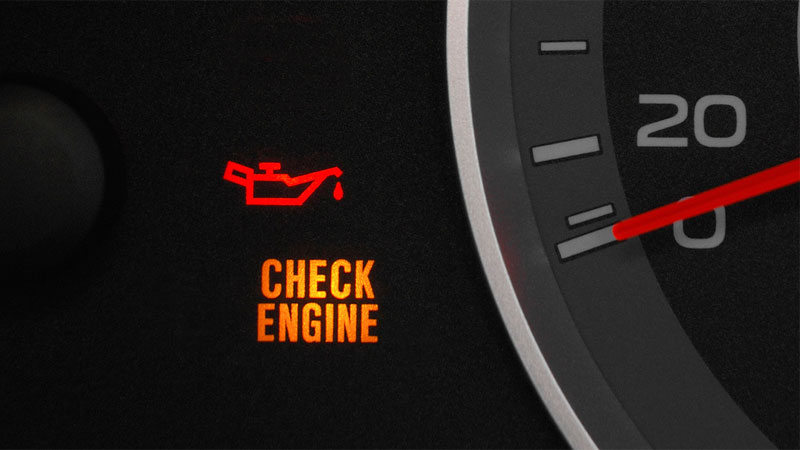
Can You Drive with a Bad Oil Pressure Sensor?
My heart sank as the dreaded oil pressure light flickered on my dashboard. I had a sinking suspicion that my oil pressure sensor might be malfunctioning, but I couldn’t ignore the potential consequences. Could I risk driving with a faulty sensor, or was it a recipe for disaster?
In this comprehensive guide, we’ll dive deep into the world of oil pressure sensors, exploring their function, signs of failure, and the potential risks of driving with a bad one. Whether you’re a seasoned mechanic or a concerned driver, this article will provide you with the knowledge and insights you need to make an informed decision.
Oil Pressure Sensors: A Vital Guardian
Oil pressure sensors play a crucial role in monitoring the health of your engine. They measure the pressure of the oil circulating through the engine and send this information to the car’s computer. This reading helps the computer determine if the engine is receiving adequate lubrication, which is essential for preventing catastrophic failures.
When the oil pressure drops below a safe level, the sensor triggers the oil pressure warning light on the dashboard, alerting you to a potential problem. Ignoring this warning can have severe consequences, as insufficient lubrication can lead to increased friction, accelerated wear, and ultimately, engine seizure.
Signs of a Faulty Oil Pressure Sensor
While a faulty oil pressure sensor may not always cause noticeable symptoms, there are several telltale signs to watch for:
- Flickering or intermittent oil pressure light: This is the most common indication of a sensor malfunction. It may occur randomly or only under certain driving conditions.
- Low oil pressure reading on the gauge: If you have an oil pressure gauge, it may display a reading significantly lower than normal.
- Metallic noises or knocking sounds from the engine: These sounds can indicate that the engine is not receiving sufficient lubrication.
- Loss of power or stalling: In severe cases, a faulty oil pressure sensor can lead to engine failure, resulting in a loss of power or stalling.
Risks of Driving with a Bad Oil Pressure Sensor
Driving with a faulty oil pressure sensor is a risky proposition that can lead to several potential problems:
- Catastrophic engine failure: If the oil pressure drops too low, the engine may seize up, causing catastrophic damage that can be extremely expensive to repair.
- Increased wear and tear: Insufficient lubrication can accelerate the wear of engine components, leading to reduced engine life and performance.
- Erroneous engine readings: A faulty sensor can provide inaccurate readings to the car’s computer, which may affect other engine functions.
Can You Drive with a Bad Oil Pressure Sensor?
The answer to this question depends on the severity of the sensor malfunction. If the oil pressure light is flickering intermittently and the engine is operating normally, you may be able to drive short distances to a mechanic for diagnosis and repair.
However, if the oil pressure light is constantly illuminated, the oil pressure gauge is displaying a low reading, or the engine is making unusual noises, it is strongly advised against driving. Continuing to drive under these conditions could result in catastrophic engine damage.
Tips and Expert Advice
To avoid the risks associated with a faulty oil pressure sensor, follow these tips:
- Monitor the oil pressure light: Pay attention to the oil pressure light on your dashboard. If it flickers or remains illuminated, have the sensor checked as soon as possible.
- Regular maintenance: Follow the recommended maintenance schedule for your vehicle. This includes regular oil changes and filter replacements, which can help prevent oil pressure sensor failures.
- Use high-quality oil and filters: Using high-quality oil and filters can help reduce the risk of sensor malfunctions by preventing debris from clogging the sensor.
- Listen for unusual noises: Be aware of any unusual noises coming from the engine. If you hear metallic noises or knocking sounds, have the oil pressure sensor checked.
By following these tips, you can increase the likelihood of detecting and addressing a faulty oil pressure sensor before it causes serious problems.
FAQ
- Q: What are the symptoms of a bad oil pressure sensor?
A: Flickering oil pressure light, low oil pressure reading, metallic noises from the engine, and loss of power.
- Q: Can I drive with a bad oil pressure sensor?
A: If the oil pressure light is intermittent and the engine is running normally, you may be able to drive short distances. However, if the light is constantly illuminated or the engine is making unusual noises, it is strongly advised against driving.
- Q: How often should I replace my oil pressure sensor?
A: The replacement interval for oil pressure sensors varies depending on the vehicle make and model. Consult your vehicle’s owner’s manual for specific recommendations.
Conclusion
In conclusion, while it may be possible to drive short distances with a bad oil pressure sensor, it is a risky undertaking that can lead to catastrophic engine failure. By monitoring the oil pressure light, following recommended maintenance schedules, and listening for unusual noises, you can proactively detect and address any issues with your oil pressure sensor, ensuring the longevity and smooth operation of your vehicle.
Are you experiencing any of the symptoms associated with a faulty oil pressure sensor? If so, it is crucial to have your vehicle inspected by a qualified mechanic as soon as possible to avoid potential engine damage.

Image: m.youtube.com

Image: policy.pinterest.com
FTeX advanced wireline formation pressure testing service | Baker Hughes Nov 1, 2023The oil pressure sensor, a vital component in modern engines, plays a crucial role in monitoring the engine’s health. Its primary function is to measure the pressure of the engine oil and ensure it stays within optimal operating levels. This sensor serves as a guardian, alerting drivers to potential issues before they escalate, thereby preventing severe engine damage.